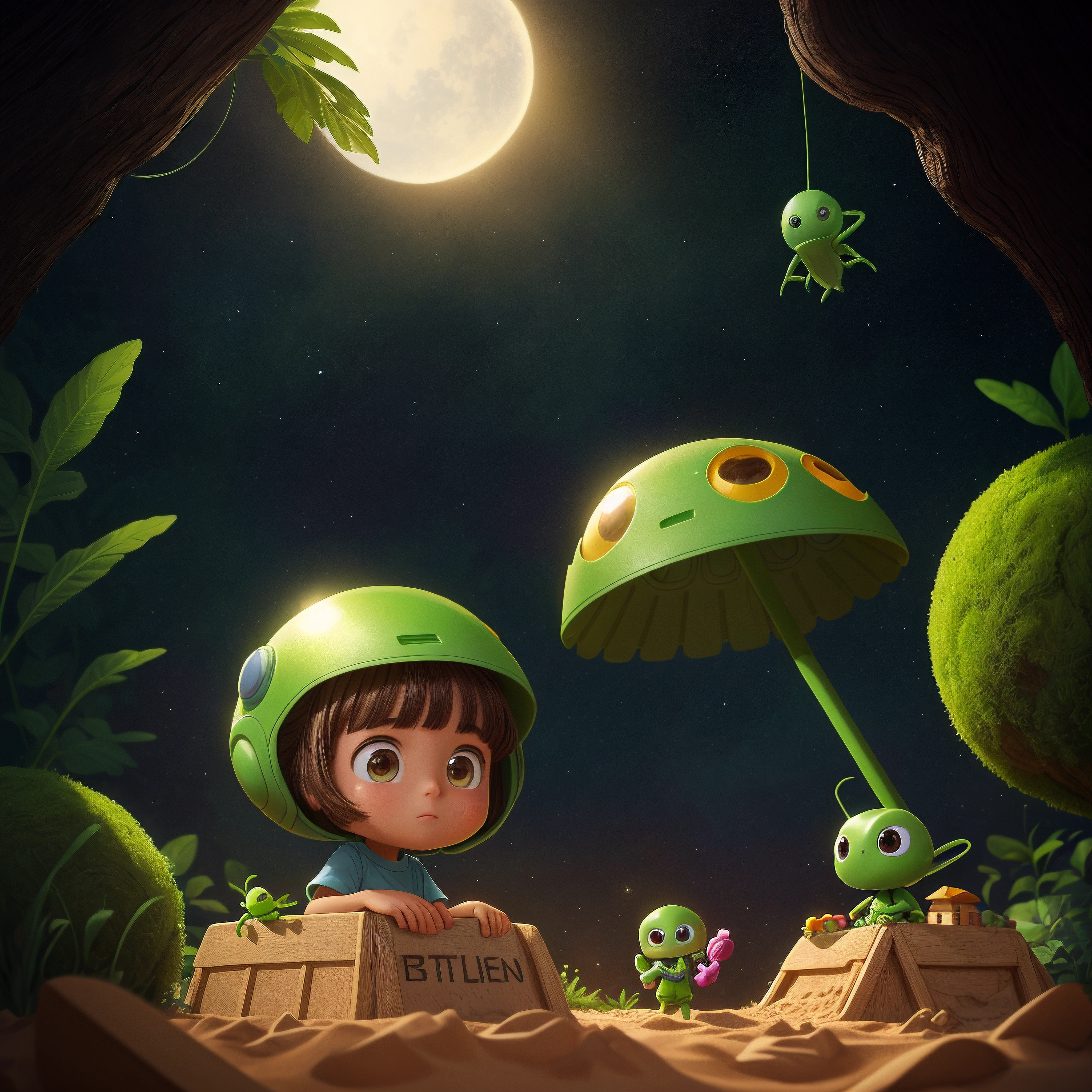

Recommend

En el reino flotante de Gramáticalia, las pequeñas pirámides azules acompañaban siempre a las grandes pirámides negras, asegurándose de que sus nombres fueran recordados. Sin embargo, si una pirámide negra quedaba sola, su voz se apagaba y desaparecía en la niebla del olvido. Un día, La, una curiosa pirámide azul, escuchó un susurro en el Bosque de las Palabras Perdidas. Allí encontró a Castillo, una gran pirámide negra que se desvanecía en la bruma. —¡No te preocupes, yo estaré contigo! —dijo La, intentando unirse a Castillo. Pero un viento dorado la empujó hacia atrás. Algo le impedía quedarse con Castillo. —No… no puedo unirme a ti —susurró La. Entonces comprendió: ella no era la pirámide correcta. Corrió en busca de su amigo El, quien sí podía acompañar a Castillo. Cuando El Castillo se formó, una luz dorada iluminó el bosque y otras pirámides azules despertaron, encontrando a sus compañeras: El Árbol, Un Río, Una Estrella… Desde entonces, ninguna pirámide negra volvió a estar sola en Gramáticalia, y cada vez que los niños decían el sol, una casa o las nubes, sin saberlo, mantenían viva la magia de las palabras.

Alice and her dad climb a mountain and fund a castle. They have an adventure

Isang araw sa ilalim ng karagatan, naisipan ng magkakaibigan na Kaloy, Katang, at Sugpo na maglaro ng tagu-taguan. Nahirapan ang taya na si Katang na hanapin ang kaibigang si Kaloy, ang tanong niya sa sarili, "Saan Nagtago si Kaloy?"

The Adventures of Pippin and the Magical Forest is a charming story about a curious little rabbit named Pippin, who embarks on a magical journey into a mystical forest. Guided by new friends—Whiskers the wise cat, Luna the gentle owl, Flicker the playful firefly, and Glimmer the kind unicorn—Pippin faces fun challenges and solves riddles, learning valuable lessons about bravery, friendship, and teamwork along the way. As Pippin explores the forest’s hidden wonders, he discovers that the true magic comes not from enchanted creatures, but from the love and kindness we share with others. This enchanting tale encourages children to embrace curiosity, overcome fears, and appreciate the beauty of nature and friendship. Themes: Friendship, teamwork, courage, curiosity, nature Moral: The greatest magic is found in friendship and believing in yourself.

Si Ranilo ay isang tamad na bata. Tamad siyang kumilos at di sumusunod sa utos n kaniyang nanay

In a sunny little As Bella lay in bed each night, she dreamt of sparkling streams and dancing flowers, knowing that magic lived in the heart of those who cared.

Jack and Norah save the day from pirates.

The Adventures of Max and Luna Join Max and his playful puppy, Luna, on a magical adventure through their backyard! When they discover a sparkling path leading to a hidden treasure, they unlock the door to a secret garden and meet a friendly dragon named Drago. With magic flowers as a special gift, Max and Luna's exciting journey ends with a happy surprise at home. Perfect for young readers who love adventure and imagination!

Students write letters to their family members as part of a school project.

In the heart of the vibrant African savannah, where the grass danced in golden waves and the sky stretched endlessly blue, there was a majestic lion named Simba. Simba was known far and wide not just for his strength but for his incredible wisdom.

Ellie the elephant learns that the differences between her and her friends makes each of them unique. She discovers the importance of being different from one another and that individualism creates a world full of vibrant life her friends are,a zebra and tiger takes place in a jungle/forest

Girl is kind meet a monster and fun

A minesweeper is a small naval warship designed to sweep the water clear of mines. Minesweepers keep waterways clear for shipping. They are quieter and less magnetic than other ships, so the mines won't explode when being swept.

Boy regrets scaring younger brother

the rabbit ate the cabbage

Digital Toddler Daily Planner Introduction: Welcome to the Digital Toddler Daily Planner, a comprehensive tool designed to help parents organize and optimize their toddler's daily routine. This digital planner includes printable daily sheets with dedicated sections for meals, naps, playtime, and bedtime, making it easy for you to create a balanced and flexible routine for your little one.

Once upon a time, in a new daycare, little Nicole, a cheerful and determined girl, found herself without friends. One day, while playing in the sandbox, she discovered a small green alien named Beep. Lonely like her, they became fast friends, exploring, drawing cosmic maps, and playing games. Nicole and Beep's joy caught the attention of the other kids, who, curious, joined in their adventures. Nicole taught everyone that being unique is wonderful, and unusual friends can make life enjoyable. The daycare echoed with laughter, turning into a place filled with joy and friendship. Now known as Nicole and Beep, their story became a constellation of flying friends, teaching the magic of unity and the bright path of unique friendships.

boy listen to parent and every one lobe him

A sweet biracial girl goes and plays in the garden where she discovers a secret utopia full of magical fairies and animals that soon become her friend.

Ema is a curious girl. On Christmas eve she finds a mysterious Christmas gift with no name. She decides to look for itsowner by knocking every door on her building. And in this adventure, she got to meet every neighbor: a family with an autistic child who plays the piano and are celebrating christmas without christmas lights. but the gift didn't belong to them. she also meets an elderly couple with a dog, but the gift wasn't theirs. she also meets two men who are a couple living together in a well interior-designed apartment, but the gift wasn't theirs either. she also met an old lady who at first she was afraid to meet; she later found out she lived with cats and was nice and was going to celebrate christmas by doing a facetime call with her son. but the gift didn't belong to her. Ema decides to leave the gift where she found it. suddenly, her dad, a pilot, arrives and sees her.
